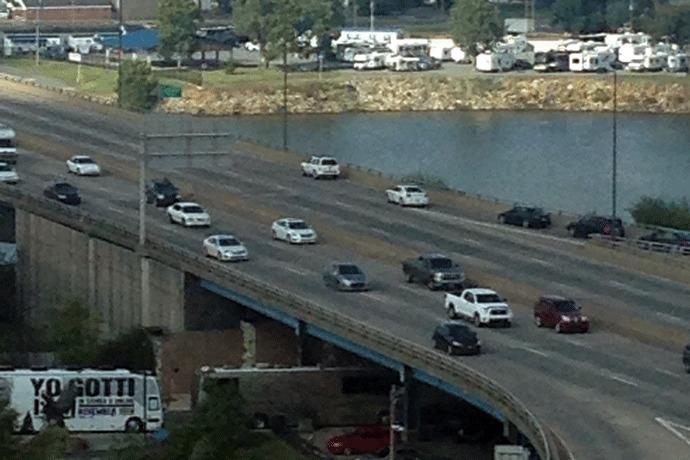Little Rock Chamber supports 30 Crossing project
by November 12, 2015 8:28 pm 359 views

The Little Rock Regional Chamber of Commerce Thursday expressed support for the Arkansas Highway and Transportation Department’s proposed “30 Crossing” project design that would create six primary lanes and four connector/distributor lanes on Interstate 30 through Little Rock and North Little Rock.
The project has drawn criticism from those who say it would diminish the area’s redevelopment, attract more traffic, and lead to costly interstate expansions near the project.
In a release dated Nov. 12, the Chamber argued that the plan developed by the Arkansas Highway and Transportation Department and coordinated by the Garver engineering firm “improves traffic safety while not materially increasing the existing right-of-way for the corridor.”
The project will widen a corridor from Interstate 530 to Highway 67 between Little Rock and North Little Rock, including the Arkansas River Bridge, from six lanes to 10. It will use slower-speed connector/distributor lanes that are separated by the interstate by a barrier and connected with ramps. Construction is scheduled to begin in 2018.
After a year-long planning and environmental linkages study, the AHTD received an acceptance letter from the Federal Highway Administration July 1. The 30 Crossing project has been the subject of five public meetings dating back to August 2014, the last of which attracted more than 400 people on Oct. 22, according to the AHTD. After that meeting, the AHTD extended the public comment period from 15 to 45 days. The next meeting will be a town hall at the Clinton Presidential Center Nov. 16 from 6-8 p.m. An eight-lane alternative is also being considered.
The Chamber said it was supporting the project because Little Rock voters in 2012 supported the statewide half-cent sales tax that is funding the Connecting Arkansas Program, of which this project is part. It said the project offers improved accessibility to downtown Little Rock thanks to the collector/distributor lanes. The current configuration, which includes the Cantrell, 6th Street and 9th Street exits located near each other and near the I-630 interchange, does not meet safety standards, and the ramps off and onto I-30 are too short. The Chamber said that the plan would keep six lanes of traffic open during the four-year construction period.
Also, the Chamber said that the current I-30 bridge does not have a shoulder where emergency vehicles can pass and where cars involved in an accident can be driven or towed. Moreover, the collector-distributor lanes someday could be repurposed as mass-transit alternatives.
Opponents, however, oppose the design. On Thursday, the historic preservation group Quapaw Quarter Association added its voice to the mix, saying that “any major undertaking like this should focus on getting people to downtown Little Rock, not through it” and arguing that previous interstate construction through Little Rock divided the city and stigmatized areas east of Interstate 30 and south of Interstate 630.
Rep. Warwick Sabin, R-Little Rock, who represents downtown Little Rock, expressed concerns Oct. 20 about how the project would affect the city’s downtown revitalization efforts. “In the end, we should be trying to entice people to live in Little Rock or pull over for a visit, as opposed to making it easier for them to live elsewhere or drive by more quickly,” he wrote.
The Chamber, however, said the design would reclaim property along the city’s popular River Market attraction and the Clinton Presidential Center that is currently occupied by I-30’s cloverleaf exit ramp system. It said the design would improve pedestrian and bicycling opportunities.
The Chamber also said the design will create a corridor for barges on the Arkansas River. Currently, the I-30 bridge is the only one of the six downtown bridges with an opening not aligned with the others, leading to barge crashes against the bridge.
